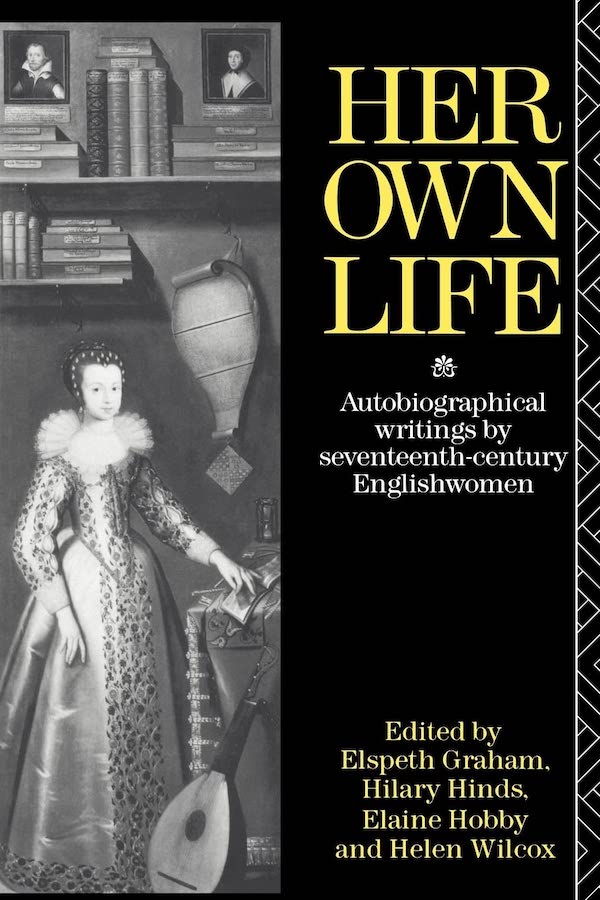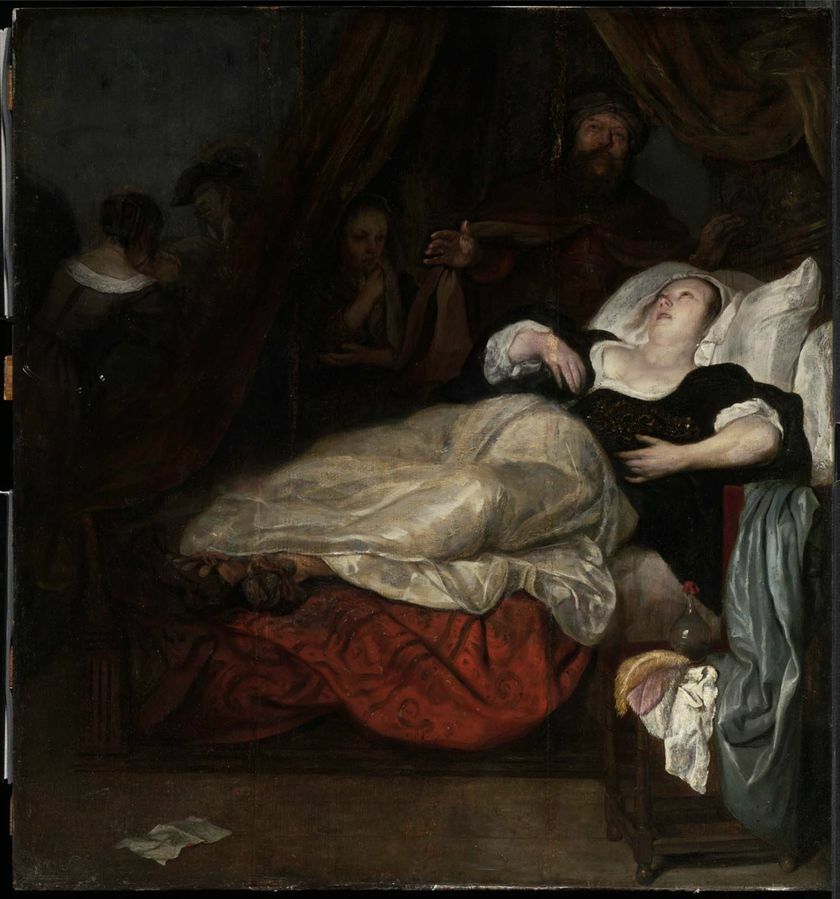Women’s History Month 2023, 3: Remembrances of encounters with Alice Thornton
For Women’s History Month 2023, we are posting a series of reflections on our first encounters with Alice Thornton and our changing relationship with her books from then to now. Feel free to get involved by sending us your own reflections on social media.
This guest post is by Professor Elspeth Graham, a member of the Alice Thornton's Books project board. She works in the field of late sixteenth and seventeenth century literature and cultural studies and has published on seventeenth-century women’s writing.
CN: pain; cancer; death
It's extraordinary how, every now and then over the space of forty years, Alice Thornton has cropped up in my life. Her appearances have always been quite unexpected -- and always serendipitous.

I can't remember exactly when I first came across her, but I'd read the 1875 Surtees edition of her Autobiography and used extracts of it in my teaching on an interdisciplinary early-modern Literature and History course in the early 1980s. Really, though, it was in the mid-1980s that I first began to work on her writings more seriously. Hilary Hinds, Elaine Hobby, Helen Wilcox and I were preparing what was to become Her Own Life: Autobiographical Writings by Seventeenth-Century English Women.[1] One of my tasks was to edit Alice Thornton's writings.
This was difficult: I didn't have a copy text. I knew that there had been several manuscript versions of her autobiography that had been in her family until the 1930s. But in spite of a great deal of searching, and the generous help of librarians in the John Rylands Library in Manchester, all the manuscripts seemed to have vanished completely without trace. In those pre-internet days, my searches first involved ploughing through endless hand-written catalogues of manuscripts. But then, in the remote hope that something remained with the descendants of Thornton's daughter's family who had owned the manuscripts, I wrote dozens of letters to all Combers listed in Yorkshire telephone directories. Nothing emerged. Not even a glimmer of a trail appeared. All that I discovered was that Yale University Library did have a 1930s microfilm of Thornton's Book of Remembrances.
I wrote and asked Yale for a copy. Sorry, they said, it was too fragile to risk copying it. So, one night, in desperation, I telephoned them. The young man who answered the phone asked where I was calling from. 'England in the UK', I answered. 'Where in England, 'he asked. 'Manchester.' Then: 'Where in Manchester?' 'Chorlton.' 'What road in Chorlton?' I told him. It turned out that he'd been on a Fulbright scholarship in Manchester and had lived on my street. What are the chances that a phone call to a random librarian at Yale should produce such a connection? And on the strength of this amazing coincidence, the librarian made me a copy of the precious microfilm. That was what I used as the copy text for Her Own Life.
Ten years went by. In 1995 my mum was dying from ovarian cancer at home in the English Midlands. I had been shocked when I arrived one hot weekend in July to discover the appalling level of her pain. Throughout her illness, she'd been advised by her doctors to keep a cancer diary; all that she'd written for the last week, in huge wobbly letters, was: 'Pain', 'Pain', 'Pain.' But Shake Siegal, her wonderful GP, came round as soon as I asked, to sort out her pain. And when she said that she didn't want to have to go back to hospital (two major operations and endless chemo had so battered her), he asked my brother and me, 'Are you up for this?' So, although it was quite unusual at that time for people to die at home, she stayed in her own bed with my brother, Rob, and me to care for her, with the support of the local hospice, and with my dad, distraught, but helping where he could.
Rob and I stayed with her, in split shifts, twenty-four hours a day for ten days, nursing her, holding her hand, talking to her. And, at first, for twenty-four hours a day, she talked to herself, dreaming out loud, as it were. There were funny conversations with her sister about 'that contraption on your head'; memories of her young life in India; ruminations about how she wouldn't mind having another baby. She chattered on and on.

Museum of Fine Art Boston. Public domain.
Quite soon, though, she slipped into a full and silent coma. Then suddenly one day, as I was moistening her mouth with a sponge lollipop, Alice Thornton popped up in my mind. I remembered details from her graphic description of her mother's death:
She had also an exceeding sore throat and mouth... The tongue and mouth at first was black, then turned white... and in the end grew with a white skin all over.[2]
And then, one day when my mum's eyes turned back in her head so that only the whites showed, I misremembered Thornton's mother's final action, when she 'lift up both hands & eyes to heaven three times' as her having turned her eyes inwards to God.[3] I should have known better than to misremember the words of Thornton's description, confusing them with, and literalising, the similar words of other women describing those on their deathbeds. But my mistake, and my literalisation of that commonplace phrase, 'turned her eyes inward,' so familiar from so many texts I'd read, was, in the intensity of the moment, a great comfort. While my brother and my dad were shocked, I just thought, 'This is what happens. I know about this.' I was unfazed. Thornton's writings along with those of many other early-modern women came to me, in however a distorted form, as a kindness, almost a sort of blessing. The mind, I discovered, retrieves or rewrites its own knowledge to assuage horror and grief; misremembering is part of the work of remembrance.
More years passed and one day I was talking to my friend, the early modernist Kate Hodgkin, about all of this. She commented on how wonderful it was that I'd experienced such a continuity over the centuries with other women -- women who'd tended their loved ones as they died. And Kate was right. That continuity of experience, that link with generations of women over centuries, is profoundly affecting and enabling, I've found.
And the relationships with living women that have come about through shared knowledge of the writings of Alice Thornton and other seventeenth-century women are equally a cause for celebration. The four of us who worked on Her Own Life are still cherished friends. And it was Suzanne Trill -- another friend met through mutual concerns with early-modern women's writing -- who told me about the extraordinary serendipities surrounding Cordelia Beattie's tracing of two Thornton missing manuscripts and the setting up of the Alice Thornton's Books project. Alice's life, it seems, has lived on in the lives of others in extraordinarily unexpected -- and rather wonderful -- ways.
Elspeth Graham et al., eds., Her Own Life: Autobiographical Writings by Seventeenth-Century Englishwomen (London: Routledge, 1989), https://doi.org/10.4324/9780203358962. ↩︎
The text quoted above is from the project's work-in-progress edition of Alice Thornton's Books. The text is modernised in the body of the blog and the semi-diplomatic transcription is reproduced here in the notes. "She had also an exiding sore throat & mouth... The Toung & mouth at first was blacke. then turnd white... and in the end grew with a white skinn all over". Alice Thornton, Book of Remembrances, Durham Cathedral Library, GB-0033-CCOM 38, 32. ↩︎
"lift up both hands & eies to heaven 3 times". Book of Remembrances, 37. ↩︎
Citing this web page:
Elspeth Graham. 'Women’s History Month 2023, 3: Remembrances of encounters with Alice Thornton'. Alice Thornton's Books. Accessed .https://thornton.kdl.kcl.ac.uk/posts/blog/2023-03-14-remembrances-encounters-elspeth-graham/